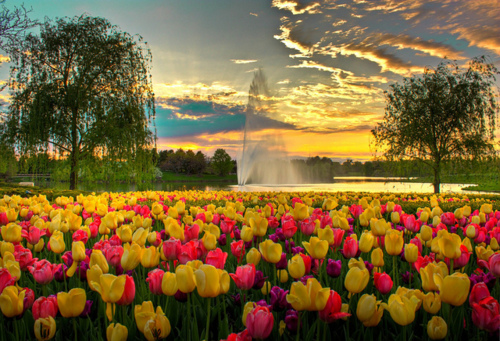
For residents of Chicago’s northern suburbs, the Chicago Botanic Garden is much more than just a collection of colorful plants and flowers. Since it opened more than 40 years ago, the 385 acre grounds have served as an important center for community activity and education. The Garden is home to 26 separate gardens and four natural areas, as well as a conservation science education center and a library with one of the country’s largest collections of botanical books. The grounds are also host to numerous community events and educational courses throughout the year.
One of the goals of the Garden, according to the Maria Gabaldo of the Garden’s Horticultural Therapy Services Department, is to “increase awareness of the beneficial influences plant-rich environments have on physical, emotional, and spiritual health.” The benefits of green space and interaction with the natural world are well-documented, and the garden serves as a great respite for Chicago residents, as the city’s downtown is only 20 miles down the road.
The Garden is also doing its part to promote healthy lifestyles and help address the city’s public health issues. Through their recently expanded Wellness Program, a number of health and wellness classes are held at the Garden throughout the year, including courses about the benefits of horticulture, how to lead a healthy lifestyle, and how to properly read food labels. In addition, in 2012 the Garden produced over 80,000 lbs of produce that was sold at neighborhood farmers markets or donated to underserved communities in Cook County.
Public education courses are not the only contributions the Garden is making to society, however. Scientists and graduate students from Northwestern University conduct important research at the Daniel F. and Ada L. Rice Plant Conservation Science Center and their nine laboratories located throughout the Garden.
Founded by the Chicago Horticultural Society in 1972, the success of the Garden is an example of the power that public/private partnership can have in changing a community for the better. The Garden is owned by the Forest Preserve District of the Cook County government and still run by the Chicago Horticultural Society with support from both public and private organizations.
The impact that the Chicago Botanic Gardens have on the surrounding community goes far beyond just being a beautiful landscape and a place to relax. This is not something that is limited to Chicago, however. More and more public gardens throughout the country are expanding their influence and attempting to address difficult issues that many communities face today. The success of the Chicago Botanic Gardens is an exemplary model that illustrates the dramatic impact a botanic garden can have on a community.
For more information: http://www.chicagobotanic.org/